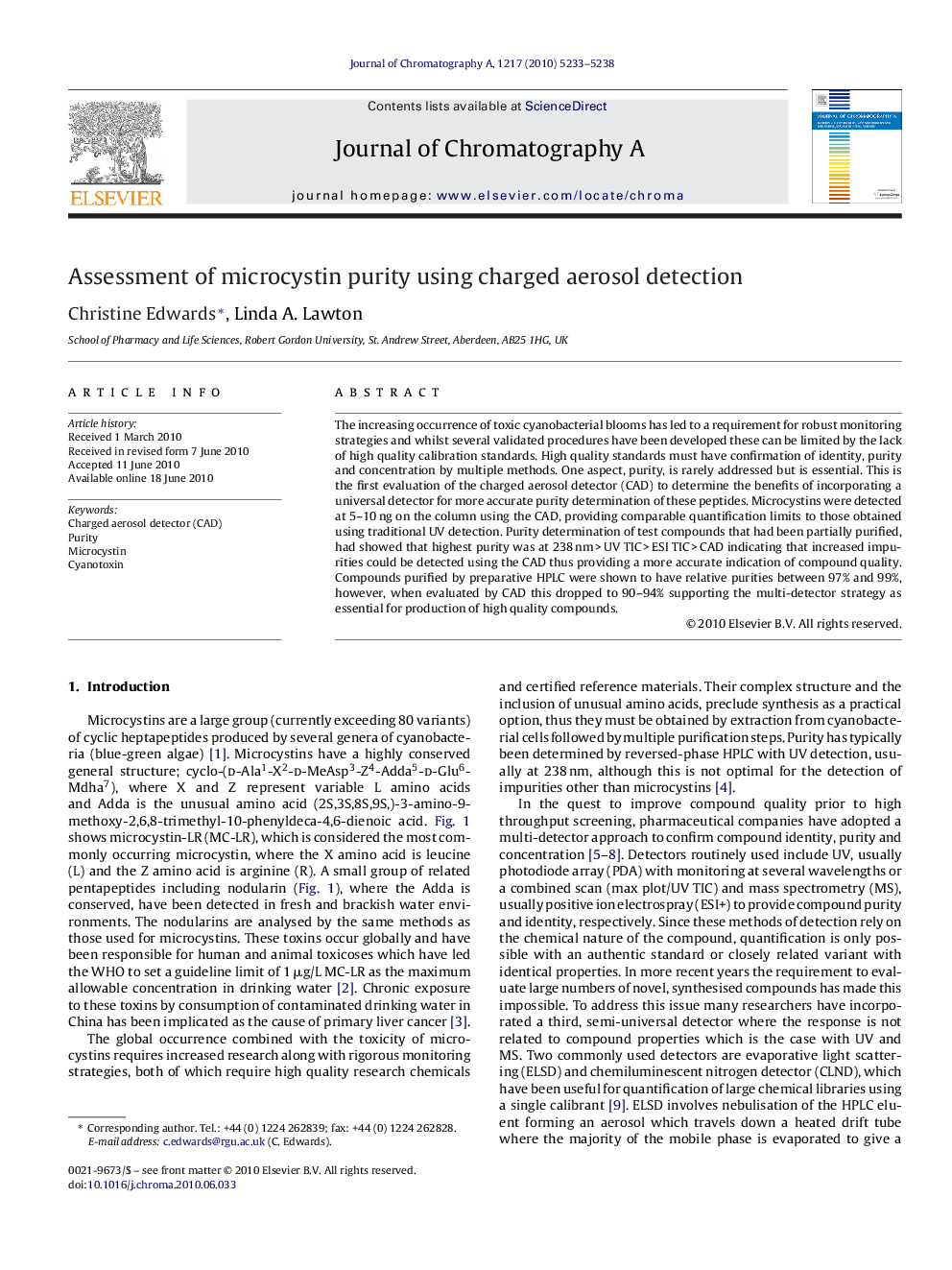| Article ID | Journal | Published Year | Pages | File Type |
|---|---|---|---|---|
| 1204812 | Journal of Chromatography A | 2010 | 6 Pages |
The increasing occurrence of toxic cyanobacterial blooms has led to a requirement for robust monitoring strategies and whilst several validated procedures have been developed these can be limited by the lack of high quality calibration standards. High quality standards must have confirmation of identity, purity and concentration by multiple methods. One aspect, purity, is rarely addressed but is essential. This is the first evaluation of the charged aerosol detector (CAD) to determine the benefits of incorporating a universal detector for more accurate purity determination of these peptides. Microcystins were detected at 5–10 ng on the column using the CAD, providing comparable quantification limits to those obtained using traditional UV detection. Purity determination of test compounds that had been partially purified, had showed that highest purity was at 238 nm > UV TIC > ESI TIC > CAD indicating that increased impurities could be detected using the CAD thus providing a more accurate indication of compound quality. Compounds purified by preparative HPLC were shown to have relative purities between 97% and 99%, however, when evaluated by CAD this dropped to 90–94% supporting the multi-detector strategy as essential for production of high quality compounds.
